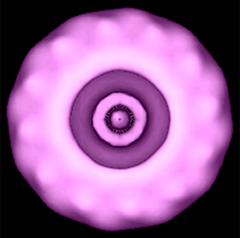
Genome dynamics and microbial pathogenesis
The stability of microbial genomes and gene pools is constantly challenged by horisontal gene transfer and recombination, as well as DNA damage. Mechanisms for rapid genome variation, adaptation and maintenance are a necessity to ensure microbial fitness and survival in rapidly changing environments. Understanding microbial pathogenesis, horisontal gene transfer and DNA repair mechanisms requires an interdisciplinary approach of molecular biology, genomics and bacterial physiology. Studies on transformation and components providing genome maintenance in genetic model bacteria are most important for understanding the balance between cellular fitness for survival and disease development (Trends Microbiol 2001, 2004). At present the group addressing these challenges in molecular and cellular biology and medicine includes eleven people and has strong international networks.
Challenges
To dissect how genome dynamics affect DNA sequence variability and conservation and thereby influence microbial fitness for survival and pathogenesis. Our analysis of surface structures and genome maintenance components will provide new insight into bacterial fitness and virulence. In the long run this information will enable us to develop new strategies for prevention and treatment of disease which also has relevance for eukaryotic systems.
Projects
- Meningococcal pilus biogenesis and DNA uptake: Neisseria meningitidis is the causative agent of meningitis. Pili are the primary virulence factor of this exclusively human pathogen. The transport of these macromolecular structures across membranes is performed by a complex machinery. We are characterising the structure-function relationship and interactions of components involved in the membrane transport of pili and DNA (Mol Microbiol 1998).
- Genomics in the search for novel signature DNA sequences: We are using our combined expertise on evolutionary phylogeny, prokaryote cell physiology and comparative genomics to identify new signature sequences. We are currently defining new tools to target novel DNA binding proteins (Nucl Acids Res 2004).
- Intracellular survival of Mycobacterium tuberculosis: M. tuberculosis is the cause of tuberculosis. Inside the macrophage phagolysozome, M. tuberculosis faces unusually harsh challenges. We are studying the mechanisms for genome maintenance and thereby fitness for survival in the world’s biggest bacterial killer.
Recent achievements
Bias of DNA uptake sequences (NAR 2004), secretin PilQ structure (JMB 2004).
Group leader
 Professor
Tone Tønjum
Professor
Tone Tønjum
Centre for Molecular Biology and Neuroscience
Department of Microbiology
Oslo University Hospital
Rikshospitalet
PO Box 4950 Nydalen
NO-0424 Oslo, Norway
Tel: +47 23074065 or +47 90152936
Fax: +47 23074061
E-mail: tone.tonjum@medisin.uio.no

The meningococcal PilQ complex is a pore through which pili are extruded (J. Bacteriol. 2003).
PO Box 1105 Blindern, NO-0317 Oslo, Norway. Tel: +47 22851528. Fax: +47 22851488